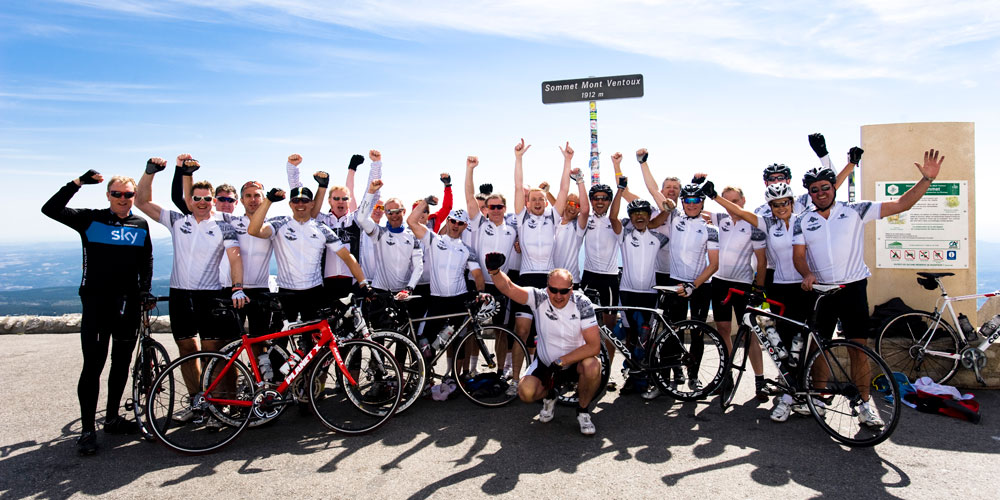Rising in glorious isolation above the lavender filled fields of Provence, Mont Ventoux stands as a colossal challenge that not only tests your strength and endurance but rewards with an unforgettable experience. This iconic mountain, known as the “Giant of Provence,” offers breathtaking views and a sense of accomplishment that few other climbs can match. It’s no wonder that Mont Ventoux is a highlight in not one, but two of Skedaddle’s road cycling holidays: Mont Ventoux to Alpe d’Huez and Ventoux à Velo. Here, we delve into what it takes to prepare for this monumental ascent and what you can expect from one of Europe’s greatest cycling climbs.
Mont Ventoux, literally the ‘windy mountain’, stands tall at 1,909 meters (approximately 6,263 feet), dominating the surrounding landscape of Provence, southern France. Made of limestone, its white rock reflects the sun so it’s summit glows whitely above the purple lavender fields and the dark forests on its lower slopes.
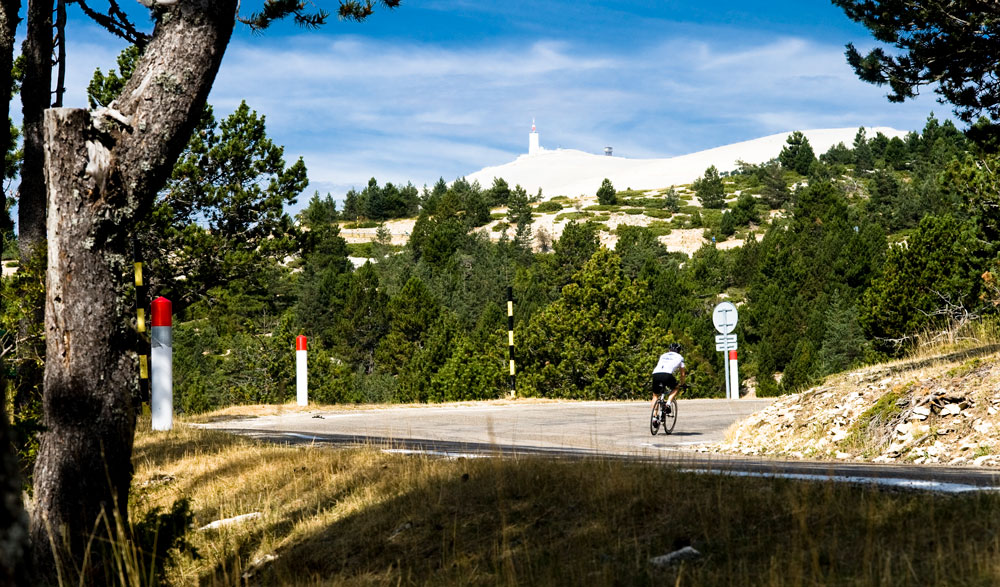
Tackling Mont Ventoux is a journey through changing landscapes and weather conditions. The base of the mountain is surrounded by Mediterranean vegetation, including vineyards, orchards, and lavender fields, characteristic of the warm, dry climate of Provence. It’s an idyllic start to the ride through fragrant air accompanied by the buzz of bees.
As you climb, the climate noticeably cools, leading to a forested zone dominated by oak and beech trees. The shade can offer welcome respite from the heat of the day and effort of cycling. The drama builds as you pedal your way upwards with bare limestone rock and sparse vegetation, creating a lunar-like landscape in the final kilometres.
Mont Ventoux in the Tour de France
Mont Ventoux has been included in the Tour de France route 16 times since its first appearance in 1951. Sometimes it is featured as a mountain stage finish, where the climax of the race day is at the summit; other times, the riders cross Mont Ventoux, descending the other side, making it part of the stage but not the final challenge. Mont Ventoux is popular with fans as it adds a layer of excitement and anticipation, it’s a place where significant gaps can emerge between riders, and the physical and mental strength of the competitors is put to an extreme test.
You may want to stop at the memorial to Tom Simpson a British professional road racing cyclist who tragically died during the 13th stage of the Tour de France on July 13, 1967. Simpson was one of Britain’s most successful cyclists of the era, having won the World Road Race Championship in 1965. Tom Simpson’s memorial stands on the barren slopes of Mont Ventoux, near the point where he collapsed, less than 2 km from the summit.
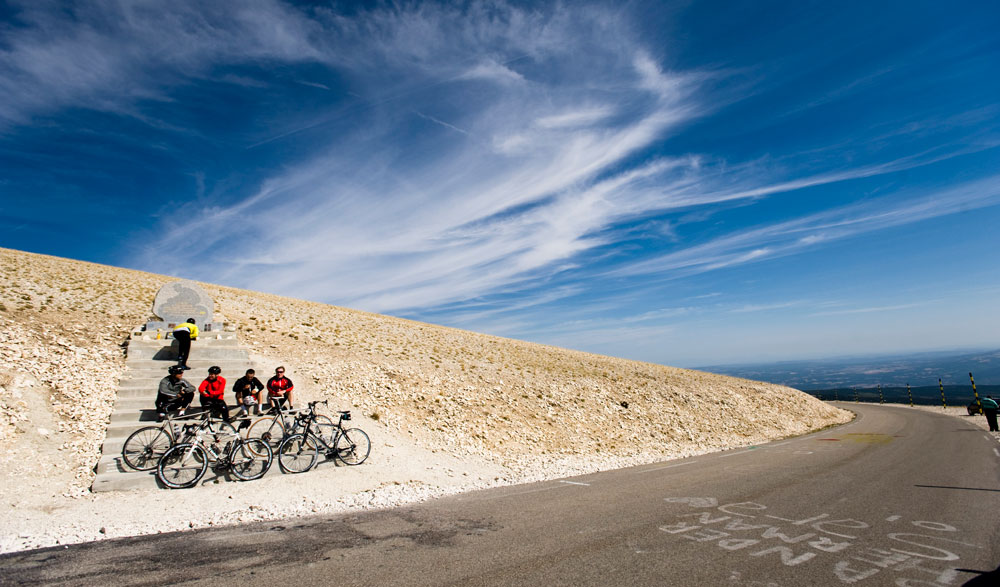
Three routes to the summit of Mont Ventoux
Mont Ventoux has three road ascents, there is even a challenge called the Cingles of Mont Ventoux to climb all three in the same day, but as the name suggests you have to be crazy to do that – it translates as the ‘crazed of Mont Ventoux’! The ascent from Bédoin is the most famous and considered the most difficult due to its long sections with steep gradients. In the forest the road ramps up significantly with 10 km of continuous ascent with average gradients often exceeding 9%. The route from Malaucène is comparable to the climb from Bédoin, with its own steep sections and relentless gradients. However, the climb from Malaucène has slightly more irregular gradients, which can make it harder to find your climbing rhythm.
Climbing from Sault is slightly longer than the other two at 26 km (16.1 miles) but starts at a higher elevation making its average gradient of 4.4% far less daunting. This route meanders through picturesque lavender fields and allows you to enjoy more of the Provençal landscape before entering the wooded lower slopes.
Our two trips featuring Mont Ventoux tackle it from different directions. The higher grade Mont Ventoux to Alpe d’Huez takes on the challenge of climbing from Bédoin, whereas the Grade 3 trip Ventoux à Velo approaches from Sault as a less brutal introduction to Mont Ventoux. However, the final six steep kilometres are inescapable as the Bédoin and Sault routes merge just below Chalet Reynard, a café and car park that offers some respite for those who need it.
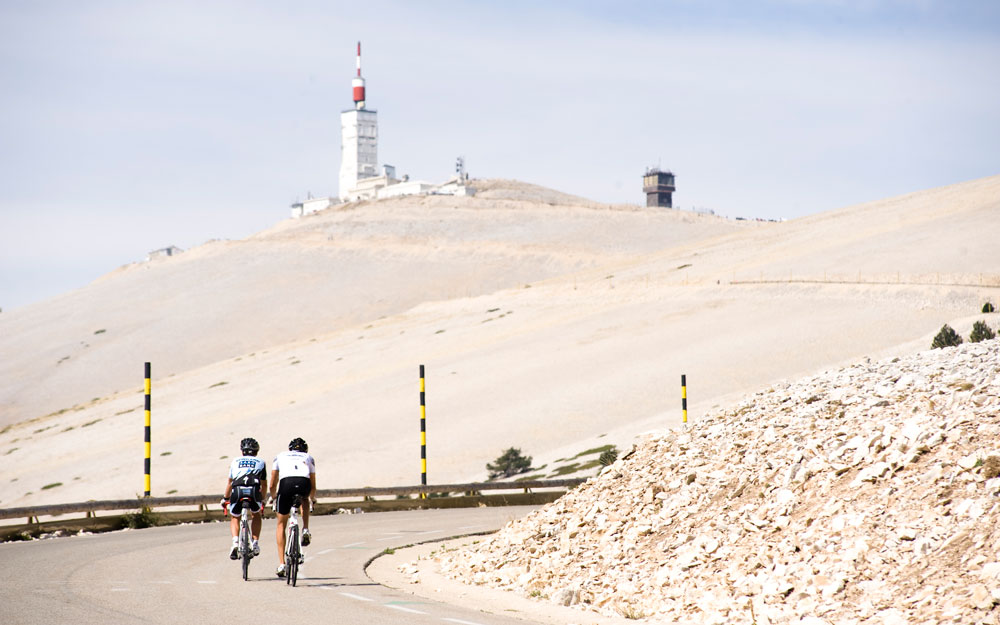
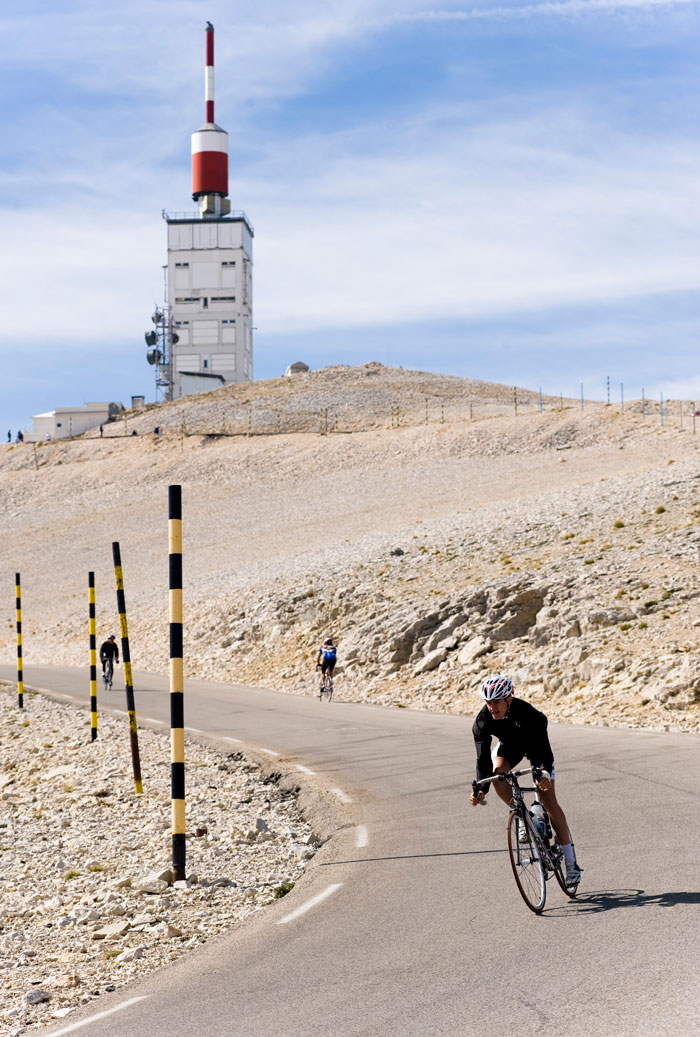
Training to conquer Mont Ventoux
Climbing Mont Ventoux from Sault is often considered the “gentle giant” route, offering a more moderate gradient compared to the steeper and more relentless roads from Bédoin and Malaucène. However, do not let its reputation for being the easiest of the three fool you; the ascent still demands respect and preparation.
Endurance training
Mont Ventoux is a climb that is measured in hours not minutes. Given the length of the climb (approximately 26 km/16.1 miles), focus on building endurance. Long, steady rides should be a key component of your training, gradually increasing in distance to boost your stamina.
Climbing practice
Mont Ventoux is unique, you will struggle to replicate it in training so instead incorporate hill repeats – ascend the same climb several times using the descent between to rest. This will help prepare your legs for the continuous effort required and help improve your climbing technique.
Learn to pace your effort
The relatively gentle slopes at the start can trick you into pushing too hard too soon, which might cost you precious energy needed for the latter part of the ascent. If you use a heart rate monitor or power meter in training get used to sticking to a sustainable effort so you have plenty left for the final and hardest part of the climb. If you don’t use these technological tools learn to do it by listening to your breath, a sustainable pace is one where you can still talk in short sentences.
Eating and drinking while cycling
While the Skedaddle van will be there for top ups of water and snacks it is best to be prepared with food and drink you know works for you. When exercising at higher intensities and in the hot weather of Provence, your stomach can be more sensitive to new foods so experiment with your on-bike nutrition and hydration during training so you have a plan. The climb will take several hours, so have two water bottles and enough energy replenishing snacks or gels to enable you to reach the top.
Kit and clothing
The weather can be quite variable as you ascend. It might be warm and sunny at the start but cold and windy as you approach the summit. Layer appropriately and consider carrying a windproof jacket for the upper part of the climb. You will also need something warm for the descent or sitting in the café with your celebratory coffee!
It goes without saying that you should ensure your bike is in top condition for the challenge of the climb and also your safety on the descent. Consider your gearing options; a compact crank set with a wide-ranged cassette could be your best friend on the steep sections.
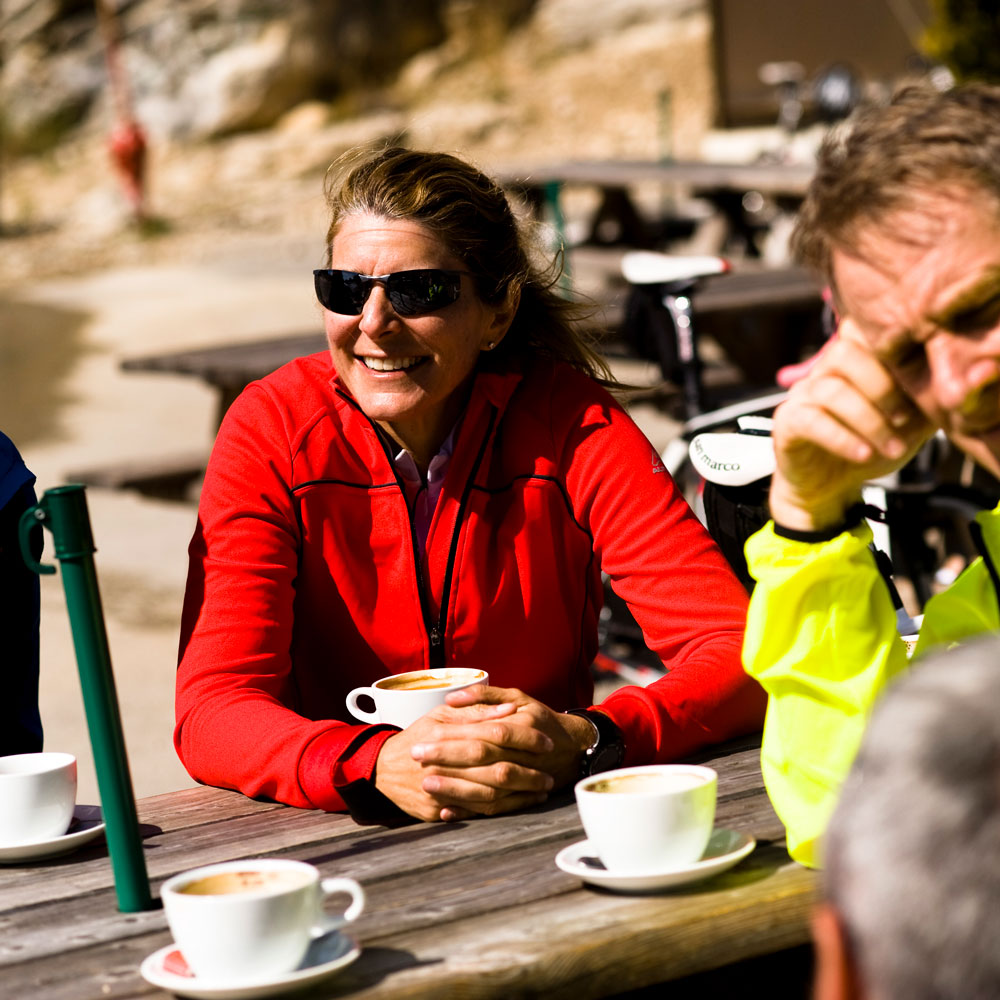
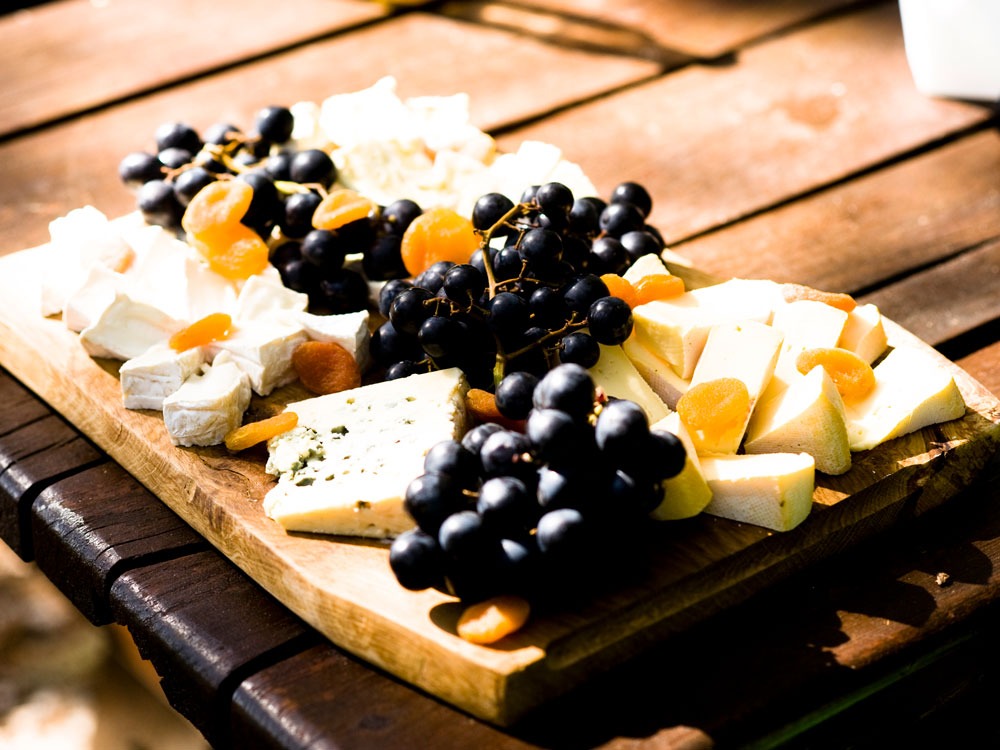
Why Ride Mont Ventoux with Skedaddle
With experienced guides, support vehicles, and a camaraderie that comes from facing such a challenge together, Skedaddle holidays are about more than just cycling. Skedaddle’s Ventoux to Alpe d’Huez and Ventoux à Velo holidays not only take you on an unforgettable journey up Mont Ventoux but also immerse you in the beauty and culture of the region. The panoramic views across Provence are your reward for conquering the Giant of Provence and reaching the summit of Mont Ventoux is an achievement that will stay with you forever.
